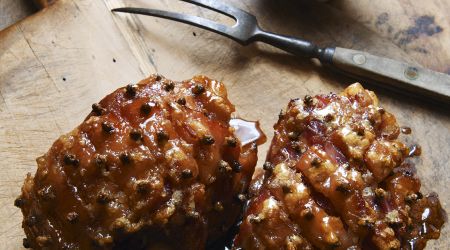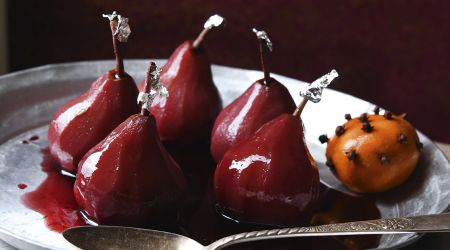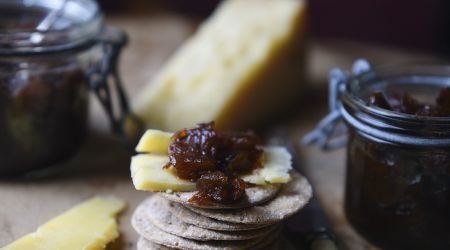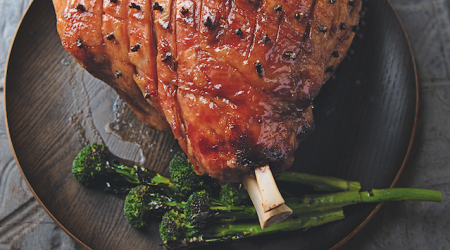Cloves
These pungent little flower buds punch above their weight when used to flavour dishes from glazed ham to mulled-wine sorbet. Clarissa Hyman shares their mysterious history, and Linda Tubby showcases them in seasonal recipes
What are they?
A clove pomander, that Christmassy-smelling orange stuck with cloves, takes you on an instant time trip back to the Elizabethan era when it was a traditional way to scent clothes or ward off noxious smells. Cloves are still a staple in just about every spice rack: not surprising, perhaps, as they are among the most important spices in the history of trade and commerce. They are, in fact, the unopened, immature flower buds of a small evergreen tree that typically grows close to the sea and are native to the Maluku or Spice Islands, which today form part of Indonesia.
The cloves are harvested twice a year, picked when the bright pink buds reach full size but before the yellow petals open. The distinctive aroma comes from an essential oil that oozes out of the ‘nail’ under gentle pressure. The buds are then sun-dried until they lose two-thirds of their weight.
The English name is from the French clou de girofle, referring to the nail-shape of the dried bud: this similarity is also noted in the Spanish, Portuguese, Italian and Persian names.
The origins
The earliest references to cloves are found in ancient Chinese literature, where they were called the ‘bird’s tongue’ spice.
Spice historian Jill Norman notes that if you were privileged enough to address the Han emperor, you were required to have a few cloves in your mouth to keep your breath sweet. Historic Tic Tacs, you could say. Since then, their history has been one of mystery and adventure. Bought and sold by the Romans, by the second century AD their use had slowly spread along the Silk Road to almost every country in Europe. Their geographical origin, however, was a closely guarded secret until 1511 when the Portuguese, under Magellan, spotted the trees growing in the Maluku archipelago.
From then on, the Portuguese controlled the trade until driven out by the Dutch in 1605. The latter restricted the cultivation of clove trees to one island, but in 1770 the French succeeded in smuggling seedlings to Mauritius and Reunion. Intrigue at the court of Louis XV led to the sabotage of these trees but the single one that escaped destruction became the ancestor of virtually all the cloves used in the world today.
Plantations were subsequently established in Zanzibar and Madagascar, the largest global suppliers. In keeping with the centuries-old desire for a monopoly on the spice, Zanzibar made it a capital offence in 1972 to smuggle cloves out of the country. The spice has always commanded a high price, and will likely continue to do so, as harvesting requires a tremendous amountof costly, expert and time-sensitive hand labour.
Tasting notes
Their assertive aroma is warm and rich. Tasted on its own, a clove is bitingly sharp – so hot and bitter it can practically numb the mouth. These effects, however, are tempered by cooking and combining the spice with other ingredients, but they should still be used in moderation as their strong flavour can become overwhelming. As food expert Tom Stobart notes in The Cook’s Encyclopaedia, used as a flavouring, cloves are best when kept below the level of recognition.
Any benefits?
Diluted clove oil can act as an antiseptic and analgesic when used as a mouthwash or gargle. Rubbed on to the gums, it is said to relieve toothache. As they may increase testosterone, cloves are also said to increase energy and nervous stimulation by relieving stress and anxiety: in addition they are believed to be a natural aphrodisiac. To be discussed at your next dinner party.
Go well with…
They enhance both sweet (think Christmas pudding and apple pie) and savoury foods such as soused herrings, meat and rice dishes. Alfred Prasad’s zafrani pulao infuses rice with cloves, cumin seeds, saffron, cinnamon sticks, cardamom pods and bay leaves. Ground cloves are a common ingredient in many spice mixes such as garam masala and five-spice powder due to their natural affinity with black peppercorns, nutmeg and cinnamon.
Pickles, preserves, chutneys, sauces, punches and mulled wine gain extra flavour from cloves, as do dishes such as Middle Eastern lamb with pomegranate juice and yoghurt.
Quick tips
Include a few cloves when stewing fruits such as apples, pears and plums, add to chilli con carne and boiled rice, or put a clove in a bouquet garni. Some other popular ways to use them: stick them in an onion to flavour bread sauce; stud apples or ham before baking; or flavour apple butter (sugared fruit purée) along with cinnamon. Take mulled cider to a new level by spiking both a clementine and lemon sliced into wedges with cloves and warming in a mixture of whisky, cider, orange liqueur and honey along with cardamom pods, cinnamon sticks and grated nutmeg.
How to showcase them
Preserve kumquats in sugar and wine vinegar with cinnamon sticks and whole cloves for a glorious-hued preserve that makes a lovely seasonal gift to eat with cold meat and game.
Old English spiced beef combines ground cloves with nutmeg, juniper berries, mace, black pepper, brown sugar and sea salt to make a special-occasion dish to serve a crowd.
Their versatility is demonstrated in a wide range of impressive dishes, from Matt Tebbutt’s luxurious lobster masala with spiced lentils to Jane Baxter’s elaborate but fabulous Mexican fish and sweet potato salad. And it’s an important ingredient in Cyrus Todiwala’s delicious Goan-style pulled pork.
Anything else?
Clove trees can take 20 years to reach full maturity and can continue to bear fruit for around 50 more. When buying, always look for cloves with a bright, reddish-brown colour, which are rough to the touch and snap cleanly. When using as a powder, it’s best to grind whole cloves yourself using a pestle and mortar to ensure flavour and freshness – ready-ground cloves may prove disappointingly stale and flat.
Unusual uses include clove cordial, which was popular in the 19th century as a tonic mixed with cassia, peppercorns and eau-de-vie or whisky; and Indonesian cigarettes, called kretek, are made with two parts tobacco to one part cloves.
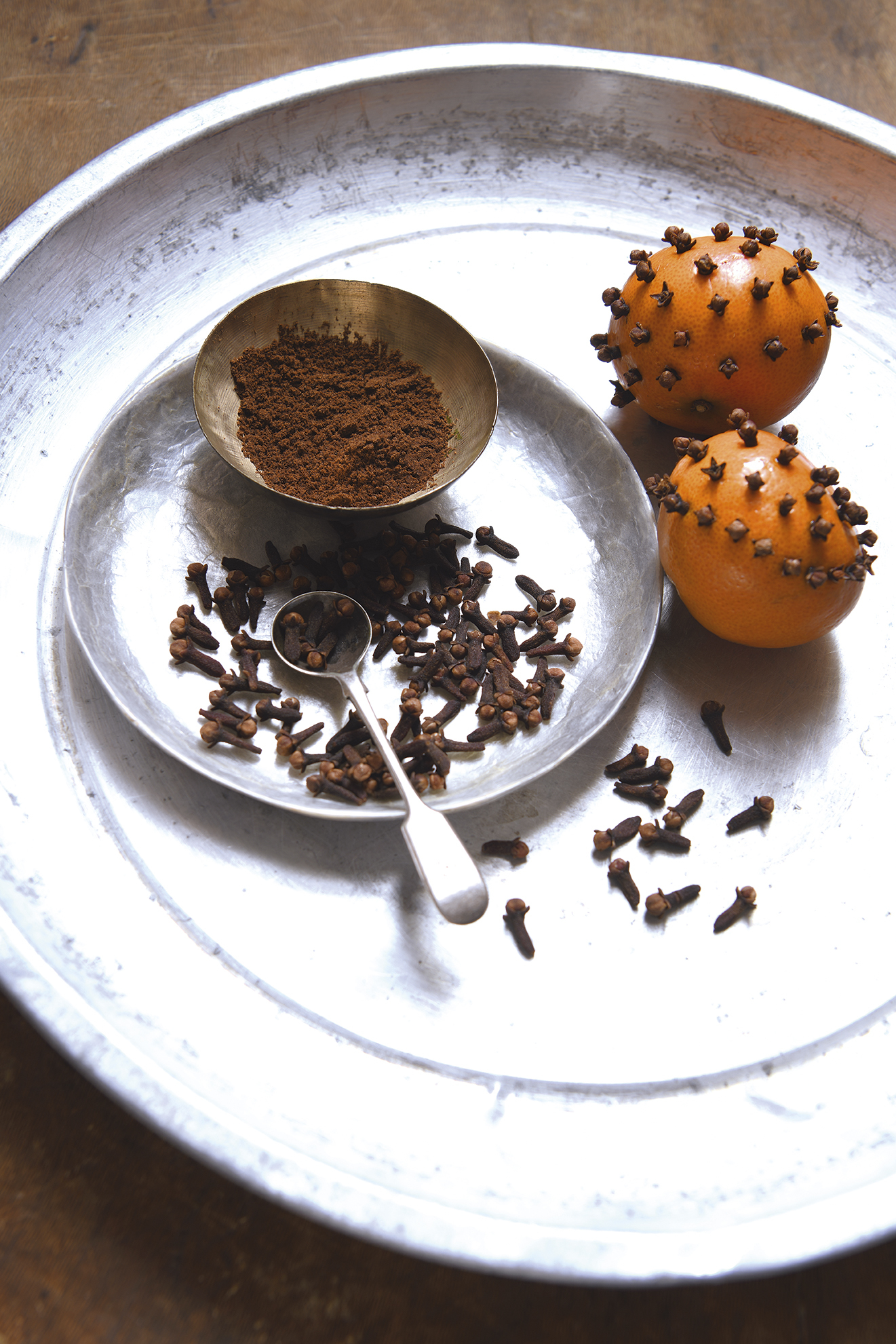
Recipes
Get Premium access to all the latest content online
Subscribe and view full print editions online... Subscribe

